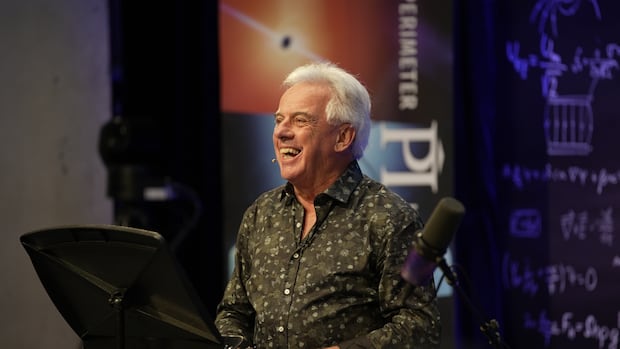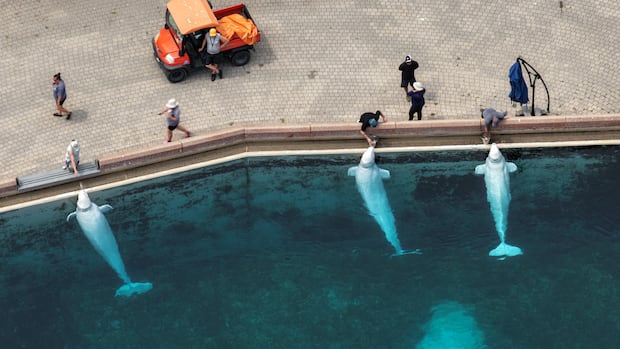A natural remedy that has previously helped counter oil spills will be too slow to “do any useful work” if there’s a spill in the Canadian Arctic, increasing chances of “catastrophic” harm, researchers say.
Preliminary findings from the GenIce II research team, led by Eric Collins from the University of Manitoba in Winnipeg, suggest oil-degrading microbes respond very slowly to oil-contaminated Arctic waters.
“We do see that it takes at least a few weeks or a month for the microbes to respond and actually start to break down the oil, and that’s just too long in the case of a real oil spill,” said Collins, who has a doctorate in biological oceanography and is a Canada Research Chair in Arctic Marine Microbial Ecosystem Services.
In November, the GenIce II research team (GenIce is short for genomics and ice) began work at the $45-million observatory in Churchill, Man., to better understand and observe the potential impact of an oil spill in the Arctic marine environment.
Collins said the 2010 Deepwater Horizon oil spill served as a “wake-up call” for researchers to study the impact of “natural microbial communities” in oil-contaminated water.
It is believed that during the Deepwater Horizon oil spill, microbes cleaned up nearly 10 times more than humans did. The spill released more than half a billion litres of oil into the Gulf of Mexico over an 87-day period, killing thousands of marine species and contaminating the natural habitat.
Collins’s research team is focused on how microbes respond to oil in Arctic waters, as opposed to water in warmer regions like the Gulf of Mexico, where the Deepwater Horizon spill happened.
With the shipping season in the Hudson Bay extending due to melting Arctic ice and an expected increase in shipping and marine traffic through the bay, experts say the chance of an oil spill is increasing.
An oil spill near the coastline is particularly concerning to Collins because the current circulation in Hudson Bay could spread the contamination all along the coastline, endangering the ecosystem and, in turn, surrounding communities, many of which depend on the natural environment for sustenance.
Collins’ team is conducting research at the new Churchill Marine Observatory — without which Collins says the GenIce II project “wouldn’t be possible.”
“There’s no way we would get permission to put oil directly into the water in order to test the effects of an oil spill on the Arctic community, so the fact that we have these large tanks that we can pump water from Hudson Bay into and do the experiments in a controlled setting is really important,” Collins said.
The facility runs seawater through a pumphouse into two pools where the experiments occur. One pool remains uncontaminated, while oil is placed in the other pool; after the experiment is complete, the oil is removed and the water is cleaned using an on-site wastewater treatment facility, and then released back into the ocean after a third party tests its cleanliness.

Feiyue Wang, who heads the Churchill Marine Observatory, says the facility’s ability to perform controlled experiments in natural Arctic waters is unique.
Since plans for the facility were announced in 2015, it has captured the attention of international researchers, particularly from Arctic countries, Wang said — interest he expects will lead to more collaborative research with international partners.
“We’re [other Arctic countries] facing similar types of challenges and opportunities,” said Wang, who has a doctorate in environmental geochemistry and is a Canada Research Chair in Arctic Environmental Chemistry. “What’s happening in Hudson Bay is really just a forecast of what’s happening elsewhere in the Arctic.”
According to a government study in 2022, over the past 30 to 40 years, it has taken three to four days longer each decade for ice to cover Hudson Bay fully. Over the course of each decade, the ice cover has started to break about five days earlier in spring.
The ice cover in that inland sea has required more time to develop into a fully established ice cover (an increase of three to four days per decade). Ice break-up initiation has begun earlier in the spring/summer, i.e. that shift is estimated at about five days per decade.
Wang says Hudson Bay is on track to be “essentially ice-free” by the end of the century.
“As a country, as scientists, we want to get ahead of the potential issues,” Wang said. “The observatory is really geared toward studying opportunities and challenges associated with socioeconomic development in a changing environment as the Bay becomes more open.”
The observatory became operational nearly 10 years after plans were announced and roughly six years after it was expected to be completed. Complications with ownership of the Port of Churchill, a major flood in 2017 that impacted the railway to Churchill, COVID-19 and the passing of David Barber, a key figure in the establishment of the facility, all led to delays in construction.
The original location of the observatory changed after the Port of Churchill changed ownership.
With help from the federal and provincial governments, the facility was built at a new location, which did garner some criticism from the community, because it was built on traditionally significant land.
“We tried everything we could, including the input from the community, to try and minimize the disturbance to the landscape,” Wang said. “So that is an ongoing dialogue, an ongoing collaboration that we’ll be dealing with and working with the community to make sure that their concerns are addressed.”
Efforts are also being made to incorporate traditional Indigenous knowledge into the research being done at the marine observatory, Wang said.

“They’re an integral part of what we do,” Wang said. “They know the lands, they know the ice, they know the marine ecosystem, and so we always work together.”
The GenIce II team also worked closely with the community in Chesterfield Inlet, Nunavut, to help monitor the environment, watch for oil spills and research the responsiveness of Arctic microbes to oil.
“Inuit people in Chesterfield Inlet are particularly worried about oil spills coming from ships that are going there to the mines in Baker Lake, where they’re extracting gold,” Collins said.
“There’s a lot of ship traffic up there, and if there was an accident, then that could release a lot of oil, and they depend on the animals that live in the water for their subsistence.”
The GenIce II research team is planning to build on their oil spill research with their next research trip to the marine observatory for this coming winter.







